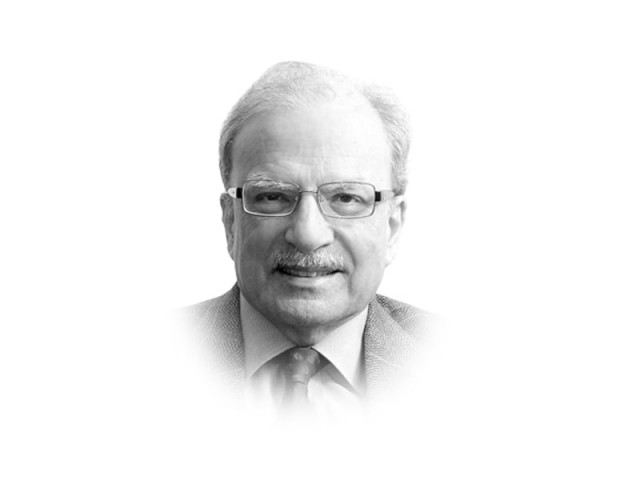Global trade: Asia chooses to go on its own
Joe Biden, the incoming president, has not spelt out his approach to international trade deals

When Donald J Trump, America’s 45th president, agreed finally to turn over the keys of the White House to President-elect Joseph Biden, he left the world in a very different shape from the one he had inherited from president Barack Obama. In his inaugural address delivered from the steps of the Capitol, Trump promised his followers that he would “make America great again”. This he would do by going alone and letting the rest of the world to its own devices.
The slogan MAGA adorned millions of red caps across the United States. Trump was confident that his followers would keep him in the White House. When the elections of November 3, 2020, did not produce that result, he refused to surrender with grace. Upon taking office, Trump got busy dismantling the global system Obama had built with care and a great deal of effort.
Included in the moves the new president made was the scrapping of the Trans-Pacific Partnership trade deal on which Obama had worked hard for a couple of years. The TPP was a trade arrangement involving 11 countries in addition to the US but did not include China. The most important aspect of the deal was to have the rest of Asia follow the American regulatory system in areas such as labour laws, environment protection, transfer of technologies. Trump decided to walk out of this arrangement for the simple reason that it was authored by Obama.
The TPP member states responded to Trump’s move by reacting positively to the Chinese initiative. Beijing sponsored the Comprehensive and Progressive Agreement for Trans-Pacific Partnership (CPTPP) that concluded in 2018, a few months after Trump had walked out of the TPP. Asian states began to wonder whether they needed a regional deal broader in scope than the CPTPP.
After four years of deliberations and two new trade arrangements, the answer was a resounding yes. On November 15, as many as 15 Asian nations announced the formation of the Regional Comprehensive Economic Partnership (RCEP). This would be the world’s largest trade bloc covering about 30% of the global population and a similar share of world economic output. It would be larger than the European Union in terms of population and gross domestic output.
According to most analysts, governments in Asia are looking to bolster regional trade rather than keep relying on Washington and other countries in developed parts of the world. But not all Asian nations are interested in joining the RECP. India, for instance, was initially a member, but pulled out fearing that some of its domestic industries would be destroyed if it lowered tariffs on Chinese imports. Prime Minister Narendra Modi had developed close relations with Trump and thought that his country’s participation would not sit well with the US President.
There were other reasons why India chose to stay out of the new pact. Indian policymakers were leery of admitting a further flood of Chinese manufactured goods. China already has a trade surplus of $60 billion a year with India. Islamabad has not revealed whether it was approached by RECP member nations to join the arrangement. Even if it wasn’t it should make serious effort to become a partner in the enterprise. It is now firmly placed in China’s economic orbit and it would be appropriate to partner with Beijing and follow its economic regulatory system.
Most expert opinion is in favour of RECP. They believe the trend will feed into accelerating international trends. “The United States vacated the rulemaking and leadership role it previously aspired to, and the region has gone on to writing the rules in the absence of the US,” said Stephen Kirchner, director of investment and trade at the University of Sydney’s United States Studies Center. Washington is eligible to the membership RECP but on RECP terms.
The RECP would bind the Northeast Asian economic powers with one another and with fast-growing Southeast Asian countries such as Vietnam. The country has become an important source for electronics and increasingly functions as an important link in the supply chains that now make up the international system of production.
The ASEAN nations included in the RECP are now linked by these arrangements. They have become largest trading partners of China after Beijing’s trade with Washington and the EU fell 10% and 5%, respectively. A simulation by the Washington-based Peterson Institute for International Economics found that RECP would raise trade among member nations by $428 billion and global GDP by $186 billion by 2030.
The trend for developing trade within the region rather than along the US-China corridor would in all likelihood be accelerated by the pandemic and the US-China trade war launched by Trump. The RECP would formalise rather than remake business practices among member countries. It would eliminate tariffs mainly for goods that already qualify for duty-free treatment under several existing arrangements. But it would allow members to keep tariffs on sensitive goods.
The rules of origin built into the pact would set common standards for much of the products produced within the region and how they qualify for duty-free treatment. The RECP did not develop guidelines for legal work pertaining to the traded goods. It avoided broad issues like protecting independent labour and environment and government subsidies to state-owned enterprises.
According to Mary Lovely at the Peterson Institute, the agreement’s lower trade barriers could encourage global companies trying to avoid Trump’s tariffs on Chinese-made goods to keep work in Asia rather than shift it to North America.
“By lowering East Asian trade costs, RCEP will accelerate the decoupling of East Asian and US economies, arguably the most productive regional partnership in economic history,” wrote Peter Petri and Michael Plummer, the authors of the Peterson study.
Evan Feigenbaum at the Carnegie Endowment for International Peace said the problem was deeper for the US leadership in East Asia. US power in that part of the world was premised not on security but also on its economic role as a driver of demand. But the US is “walking away from that role against the backdrop of shrinking relative economic role overall.”
Joe Biden, the incoming president, has not spelt out his approach to international trade deals. Some of those who support him regard the deals going against labour rights. Biden has said he would first work on strengthening American worker competitiveness and improving the country’s rundown infrastructure before considering trade deals. He is likely to concentrate his attention on issues other than trade. By appointing John Kerry to his cabinet and making him effectively the environment czar, Biden has placed environment at the center of his concerns.
By bringing in a powerful team to mind America’s external relations and security concerns, Biden has taken an important step in renewing international respect for the country he will lead beginning January 20, 2021. As The New York Times put it in an editorial, “President-elect Biden has signaled that he intends to lead America back into the international arena, and whatever their qualms or doubts, America’s friends and allies should not wait to join forces in tackling the business of the day — a global pandemic and the future of the planet, to name just two items on the agenda.”


















COMMENTS
Comments are moderated and generally will be posted if they are on-topic and not abusive.
For more information, please see our Comments FAQ